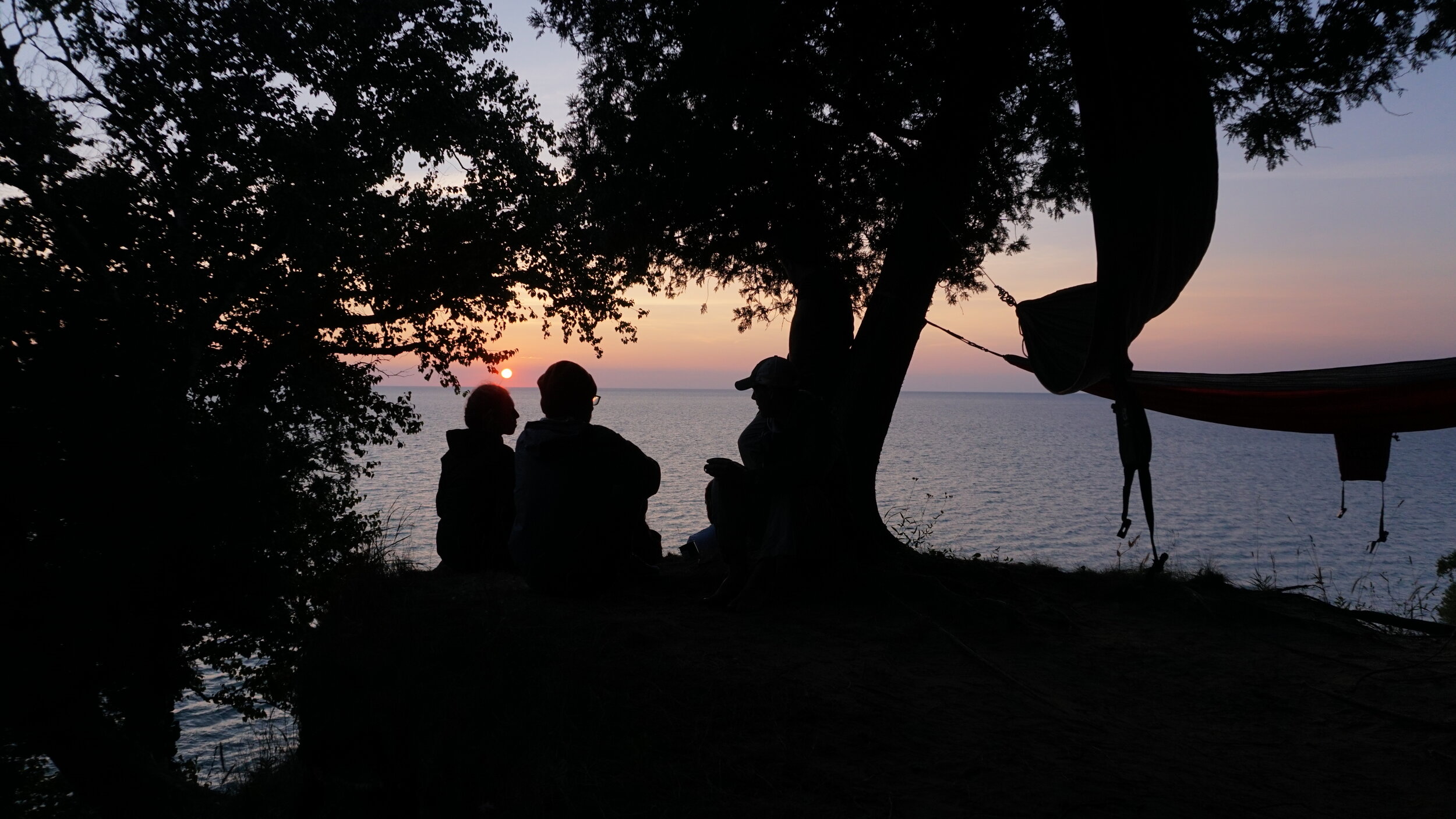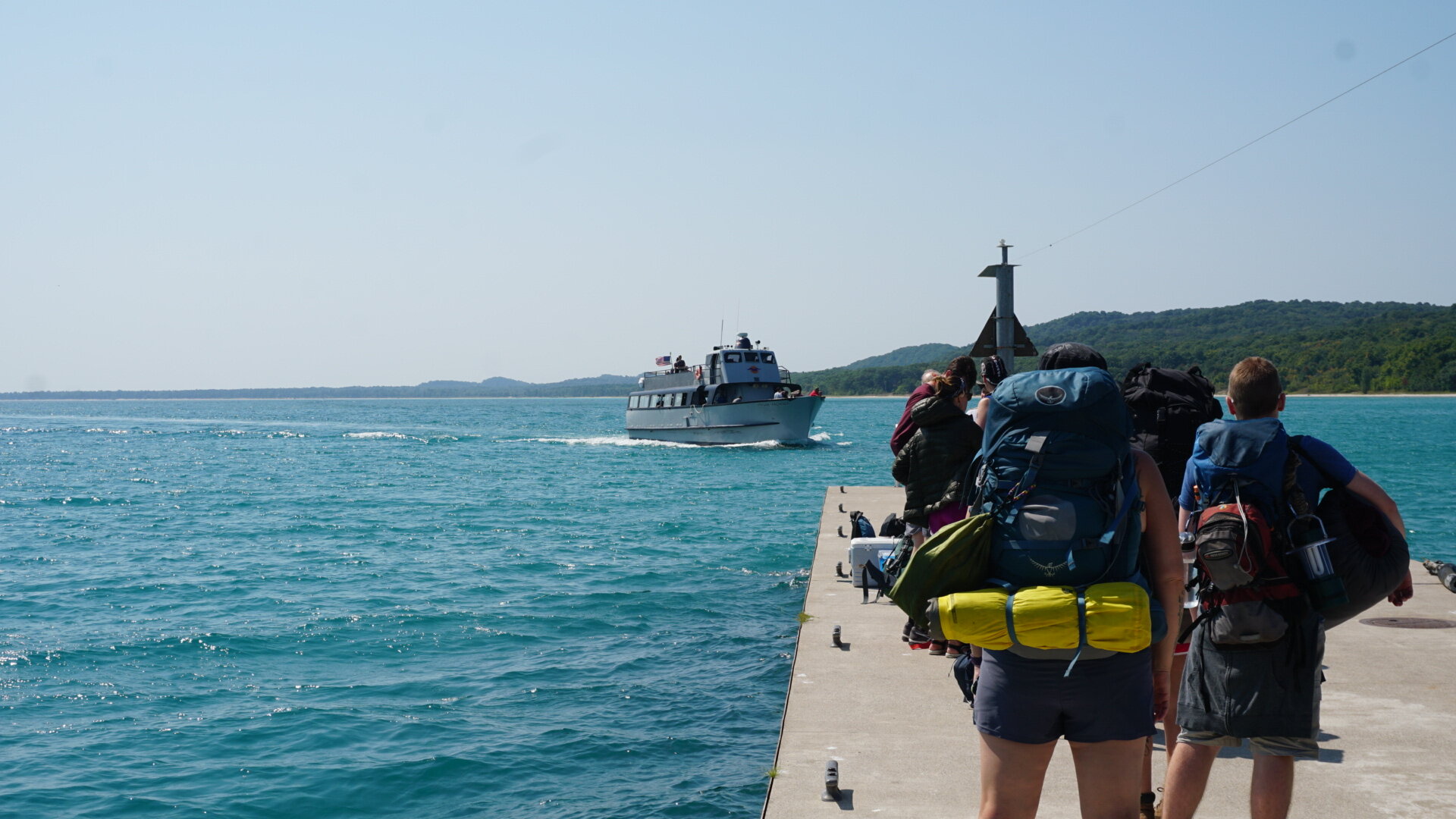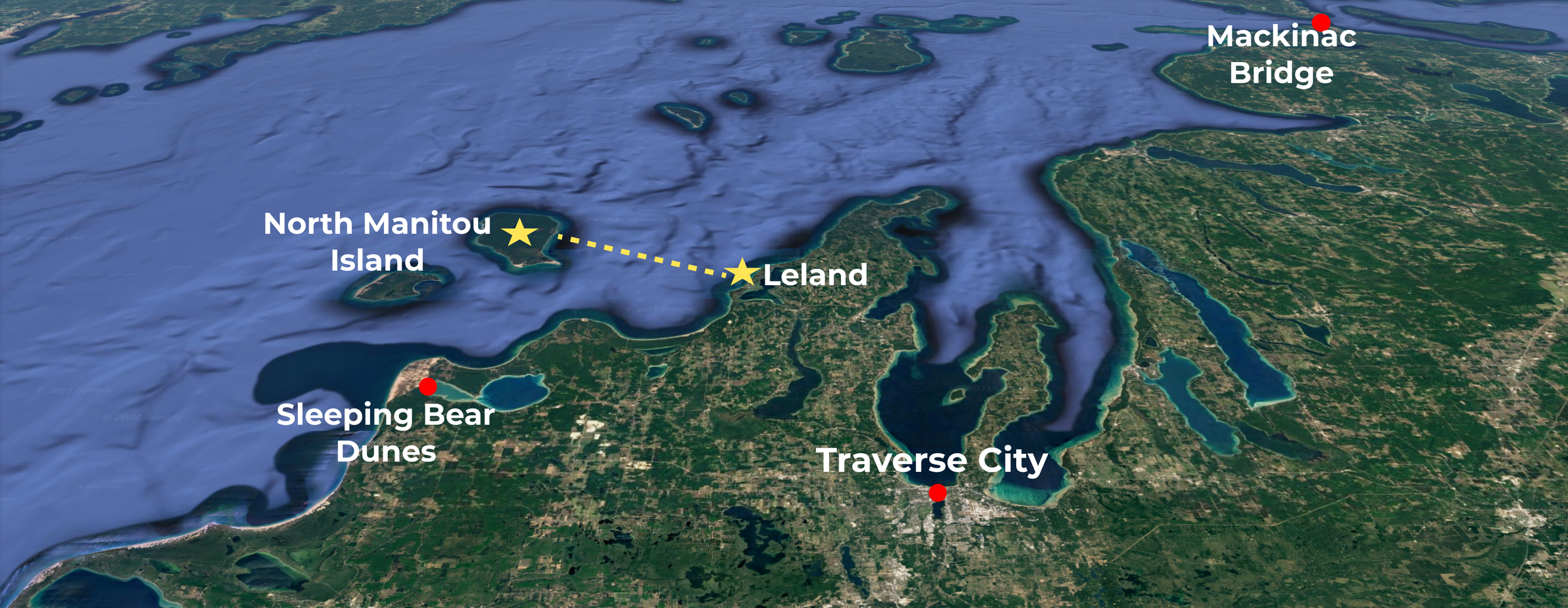
How to Plan a Backpacking Trip to North Manitou Island
What is North Manitou Island?
North Manitou Island is a part of the Sleeping Bear Dunes National Lakeshore and is located roughly 10 miles west of the small fishing town of Leland, which is about a 40-minute drive from Traverse City. The last settlements on North Manitou Island were abandoned over a century ago, leaving the island devoid of human civilization aside from the small village on the eastern shore where park rangers reside.
Aside from its pristine natural beauty and Caribbean-colored water, camping on North Manitou Island offers visitors established trail systems and diverse terrain that beckons hikers of all skill levels. With 21 miles of shoreline and a total landmass of just over 22 square miles, backpacking North Manitou Island offers some of the most remote yet accessible wilderness in the Great Lakes Region.
The Island’s west shore offers pristine beaches, massive dunes, spectacular sunsets and incredible stargazing.
Our North Manitou Island backpacking guide includes…
Essential Information for Visiting North Manitou Island
Before you even begin to plan your trip, there are several things you need to consider before visiting North Manitou Island:
There are no restaurants, lodges, showers, bathrooms, shops or air-conditioned buildings. Aside from a water spigot and composting toilet in the village, there are no amenities. Be ready to rough it.
You should be able to walk several miles a day with a weighted pack and possess:
A complete understanding of Leave No Trace (LNT).
You need to purchase Manitou Island Transit tickets from Leland in advance. You can travel to the island using a vessel of your own, but we do not recommend attempting this.
Hazards on North Manitou Island
Most outdoor enthusiasts will probably find the island's topography, flora, and fauna very forgiving. There are no large predators, and the terrain is primarily flat unless one chooses to climb steep dunes on the island's northwest side (these formations are fragile and crumble easily). If you're using good judgment, you will be safe from serious injury or death.
Nonetheless, the island is remote, cell service is unreliable, and help is very far away if you do end up needing it.
Here are the potential risks you need to be aware of:
Drowning / Rip Currents. As with any lakeshore on Lake Michigan, there can be significant wave events and powerful rip currents, especially on the island's west shore. Be mindful that if swimming in dangerous conditions goes south, you will likely be unable to call for help, and even if you do, it's hours away.
Deadfall. Storms and extreme wind events create a hazard to your campsite. Always be sure that you position your camp well away from any branches or trees that could fall and injure you.
Ticks. These tiny insects can cause Lyme Disease and are very, very prevalent on the island. Wearing long pants is recommended, especially when bushwhacking. It is a good habit to check your entire body for ticks every evening and after prolonged periods of sitting.
Poison Ivy. Know how to identify it and wear long pants when hiking off-trail. It is widespread across the island.
Swimmers Itch. Cercarial dermatitis is an unpleasant skin rash caused by parasites carried by snails. The parasite exists in Lake Manitou and Tamarack Lake, so consider saving your swimming for Lake Michigan.
Insects. Mosquitos and blackflies are abundant from June through August. Prepare accordingly with face net and a proper shelter.
Chipmunks. Commonly referred to as micro-bears, the small rodents will chew their way through unattended backpacks, tents and food bags that you fail to hang. Hang all scented items (even things like toothpaste, sunscreen, and lip balm).
Hypothermia. Keep yourself and your gear well-waterproofed. Even during the summer, prolonged periods of heavy rain and wind can drop your core temperature to dangerous levels.
Hammocks aren’t a essential item, but they’re well-worth the weight.
North Manitou Island Packing List
Everyone has their own style. In addition to what you bring to eat, here’s our recommended packing list:
Gear
Water-proof pack cover or a large garbage bag lining your pack
Sleeping bag rated for 40 Fahrenheit or warmer
Sleeping pad
Shelter that includes a bug net
Headlamp + spare batteries
Cooking stove + fuel
A pot for cooking and eating
Eating utensil
2 liters of water storage at a minimum
Water filter, Aquamira, Iodine tablets, or other purification
Trowel or spade for digging cat holes
Cellular phone
Map and compass
Stocked first-aid kit
Bags and at least 25 feet of cord for hanging food
Multi-tool or knife
Clothing
Water-compatible camp shoes (we love Chaco)
Non-cotton short-sleeved hiking shirt
Non-cotton Light, long-sleeved hoody/sun shirt
Non-cotton Fleece or lightweight insulated jacket warm-layer
Rain jacket + rain pants
Non-cotton hiking pants
Non-cotton shorts
Several pairs of non-cotton underwear
Non-cotton hiking socks (one pair per day is recommended)
Sunhat + sunglasses
Swimsuit
Other Items
Sunscreen
Insect repellant
At least two lighters or water-proof matches
Face net for insects
Non-scented, biodegradable toilet paper
Toothbrush + toothpaste
Hand sanitizer
Biodegradable camp soap
Personal items such as prescription drugs, feminine hygiene products, glasses or contacts + solution
Hammock + eco-friendly straps (recommended)
Book, journal, binoculars, fishing rod, cards or other comfort items
How to Get to North Manitou Island
Book Passage on the North Manitou Island Ferry
Before making any other plans, make sure you can book Manitou Island Transit tickets to and from the island on the days you wish to go. As of 2021, round trip tickets are:
$42 per adult
$21 for children 12 and younger
Free for children two and younger
The ferry schedule is dependent on the time of year you go. During peak season, July 1 - Labor Day, the ferry runs daily.
North Manitou Island Permits and Entrance Fee
You will pay for your permits and entrance fee upon arriving at the Manitou Island Transit Ticket Office. If you possess an NPS America the Beautiful Annual Pass, you do not have to pay an entrance fee.
The entrance fee is $25 per car or group.
Camping permits are $10 per night for groups of 4 or less.
Camping permits are $20 per night for groups of 10 or less.
Fishtown is located on the west side of Leland, between M-22 and Lake Michigan. The Village Cheese Shanty is a Leelanau Peninsula novelty and well worth a visit, but be aware wait times for sandwiches can be an hour.
Getting to the Manitou Island Transit in Leland
Click here for a Google Maps pin to the location of the Manitou Island Transit office.
The Manitou Island Transit office is located near the docks in Leland’s historic “Fishtown.” Plan to arrive at least an hour early to check in.
If you have a group, we recommended dropping everyone off in Fishtown before going to park your vehicle several blocks away between Cedar Street and Grand Avenue, near the Leland Fire Department
Sometimes the Manitou Island Transit runs shuttles, but if they’re not, the walk isn’t far considering you’re about to go backpacking.
Boarding and Disembarking the Transit
Be near the docks, ready to leave on time. When the Manitou Island Transit is prepared, they will ask guests to board and stow their backpacks. Keep whatever you need for the 1-hour and 15-minute voyage handy, as it is likely all your belongings will be buried beneath other people’s gear.
It is good form and expected of you both when you arrive at the island and return to Leland to stand in line on the dock and help unload everyone’s backpack.
Fishtown can be chaotic around the time of departure, so ensure that you arrive on time with your gear in order.
Arriving at the Island
Once you have your gear, head to the village for the ranger orientation. There, you’ll find a composting privy and a water spigot if you need to fill your bottles.
Once the orientation is complete, you’re free to explore! If you want to secure a campsite in the village campground, we recommend heading there right away as they are first come, first serve. Make sure you clip your permit outside your site and adhere to the occupancy rules.
Beyond the village campground, there are many popular spots along the island's west side near and south of Swenson's, on the east side of Lake Manitou, and along the east side of the island south of the docks. These locations will be primitive but mostly obvious as you hike along the beach or designated trail. Some campsites are more secluded than others and require a bit of exploration to find. Remember to adhere to the LNT code of ethics when camping and that using a primitive campsite that has already seen significant impact from previous campers is always better than trampling down a new campsite.
Planning Your Route
We’ve generated a high-resolution, shaded topographic North Manitou Island hiking map. Click the image to open it in a new window where you can save it to your smartphone or computer. The National Park Service has also created a map that includes notable landmarks that you can find here.
Whether you’re new to backpacking or experienced, we highly recommend checking out our guide on how to use CalTopo to plan a route. It’s a great way to head to the island with a well-constructed plan about how much distance and elevation you’ll be hiking each day.
Have a great trip!
Make sure you’re at the docks on time for pickup at 11:00 am the day of departure, and you’re all set to go. If you’re unsure if you’re ready to embark on a journey to North Manitou Island by yourself, consider taking one of our many instructional courses on backpacking or attending a guided trip.
We hope you enjoyed this guide and found it helpful. Please share it with others if you did! If you have any feedback or questions, please reach out to us using our contact form. Also, be sure to subscribe below, so you stay up to date with new guides we publish each month. Have a nice trip!









